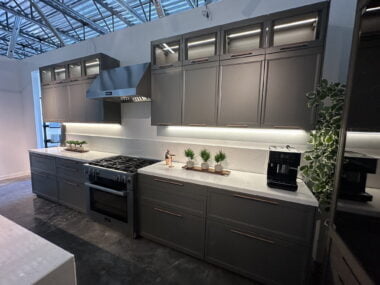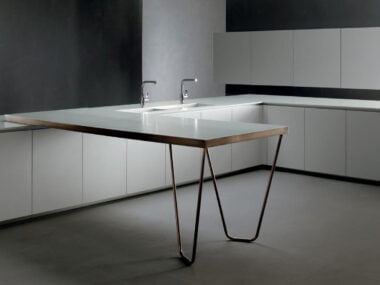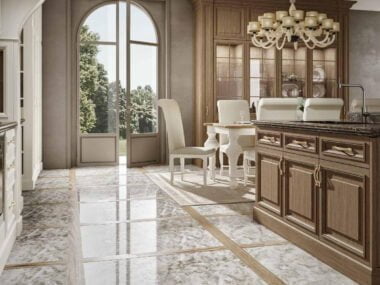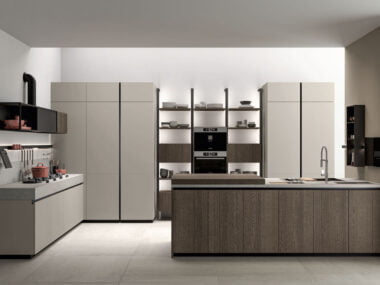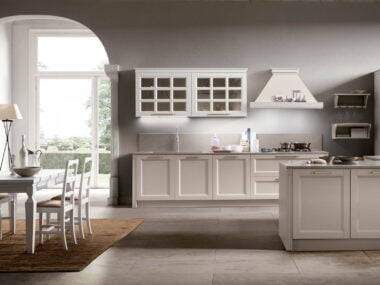How the classic French wall paneling is reimagined for contemporary spaces
The Enduring Allure of Boiserie
Boiserie paneling, a decorative wall covering, originated in 17th-century France and has remained a popular design element through centuries. Although the term may not be widely recognized by homeowners, it has continued actively to be used by designers and interior enthusiasts alike. Typically, boiserie is crafted with intricate carvings, primarily from wood but can be produced using other materials as well. These panels were used to enhance the appearance of walls and furniture and could be painted or gilded for added luxury. Presently, the term “boiserie” is used to refer to any kind of wood paneling, irrespective of origin or style. In this article, we will explore the history, characteristics, and applications of boiserie in interior design, analyze why it has stood the test of time, ways it can be incorporated into modern homes, the materials and techniques employed in its creation, and the advantages and disadvantages of including this lavish wood paneling in your own home.
Beyond the Palace Walls
Boiserie, a luxurious type of wooden paneling, was once exclusively reserved for the walls of palaces and the homes of the aristocracy. Its origins can be traced back to 15th-century Italy, where the concept of interior decoration was first conceived. The French eventually took this idea and ran with it, and by the 17th and 18th centuries, intricate boiserie had become a staple in the homes of the wealthiest French citizens. Today, however, boiserie has shed its association with traditional opulence and is now a versatile element of modern interior design. While it was once a hallmark of grandeur, boiserie is now used in a variety of settings, including contemporary minimalist spaces. The versatility of boiserie is owed to its primary material, wood, which can be crafted to suit any style or design aesthetic. With the right frame and color palette, boiserie can seamlessly blend into any modern apartment and become a standout feature of the room. In this way, boiserie has evolved from an adornment used only by the affluent to a component of interior design that anybody can enjoy and use in their homes.
Purpose in Interior Design
Boiserie originated in France in the 17th century but was used throughout Europe and Asia. Originally, French homes were decorated with heavy draperies and dark wood paneling, but the addition of light-colored boiserie helped to brighten up these dark spaces. Boiserie panels were used to decorate fireplaces, doors, windows, and entire walls. The carving could often be intricate and costly, making it an unlikely feature in a regular person's home in 17th-century France. This wood paneling was designed not only to elevate a room's beauty but also to provide insulation and heat retention. In fact, the addition of wooden panels to the walls of homes was done to help protect them and make homes warmer in the days before central heating existed. Carved and molded designs added decoration to the wooden panels, and they were fitted to bare areas of homes and other buildings to make them aesthetically pleasing. Having boiserie in the home was also a statement of taste and perhaps wealth. As the fashion for this type of interior design grew, boiserie was no longer limited to living room walls. Ornate ceilings, grand corridors, and even libraries were decorated with boiserie. Simple square wooden paneling and clean geometric lines and designs are also used in boiserie. So, boiserie has served multiple purposes over time, including insulation, heat retention, decoration, and status symbol.
Still Popular Today?
Boiserie has a long life and is still very much in demand today. Though they fell out of fashion in the 18th century, they experienced a revival in the 19th and 20th centuries and continue to be popular in both traditional and contemporary homes. Boiserie helps to add visual interest and depth to any space, creating a warm and inviting atmosphere when used judiciously. For example, a Paris-based firm specializing in antique wood paneling, Féau & Cie, has been producing complex boiserie for over 140 years, and while seems their work can be found only in grand luxury homes around the world, it is just as common to see these panels used in regular apartments. Therefore, it's safe to say that boiserie paneling is still popular today, and its use in modern interior design is a testament to its enduring appeal.
Using in Your Home
Boiserie is a timeless and versatile design element that can be used to add character and elegance to any home interior. Whether you're looking to create classic French decor or a modern aesthetic, boiserie can be utilized to achieve the desired effect. These wooden panels not only bring aesthetic appeal but can also help to hide imperfections and wall damage, making them a practical solution for many homeowners. Boiserie can be used throughout a room or home, or as a feature wall that could be added to create a bold statement. They can even act as a common thread in the home’s design, more effectively than a color palette guide, thanks to their tridimensionality and strong scenic impact. Classic baroque-style boiseries from 18th-century France can be integrated perfectly into neoclassical-style homes, especially when mixed with everyday items and design icons. One of the most significant advantages of boiserie is their ability to create the illusion of space. By adding mirrors to the panels, rooms can appear larger, and careful use of this paneling can transform a small bedroom into a grand Parisian boudoir. Kitchen cupboards can also be decorated with boiserie, adding an extra touch of elegance to your culinary space. Today, ready-made boiserie panels exist, making it far simpler to add them to your home than back in the 17th century. They can be painted, treated, and used creatively to achieve the desired effect. From conveying the classic feel of royal France to creating clean lines and adding character to the dullest spaces, boiserie can be used in various ways to transform your home.
Materials and Techniques
Boiserie is traditionally made from various types of timber such as oak, mahogany, chestnut, or dark wood. However, modern interior designers have experimented with alternative materials to create unique boiserie designs. Plaster, cement, marble, ceramic, bamboo, and even metal are used to create a boiserie-like wall or ceiling covering. For a shabby chic look of boiserie, natural wood boards are used and whitened or painted in pastel colors with added scratch or spatula effects. Modern-style boiserie is characterized by squared frames, without decorations and matt colors in shades of grey, white, and dusty tones. However, sometimes wooden panels are painted in bright and daring colors to create a sharp and expressive contrast. In general, whether classic or modern, a boiserie is a stunning addition to any interior design.
The Pros of Incorporating Boiserie
Boiserie has many benefits that make it a great addition to modern homes.
- Firstly, wooden panels enhance the thermal insulation of walls, improving domestic comfort, especially in mountain homes.
- Secondly, boiserie made of wood or other materials can provide valid acoustic insulation.
- Thirdly, modern materials like polypropylene are ideal against humidity and mold.
- Fourthly, boiserie made of thermoplastic materials can become brilliant decorative elements since they can be painted in every tint.
- Fifthly, the panels are very functional in the opinion of designers, especially in smaller spaces, as they can create optical effects that make the room feel larger or smaller.
- Sixthly, embossed shapes and different colors can create visually strong corners, giving personality even to the most anonymous space.
- Finally, the boiserie can hide potential imperfections of the walls, creating a uniform surface that is completely customizable and gives order and continuity to the spaces.
In summary, boiserie is a beautiful decorative element, that also has functional benefits that improve the comfort and design of modern homes.
The Cons of Boiserie
While boiserie can be a beautiful addition to any home, there are some potential downsides to consider before making a final decision.
- Firstly, the cost of ready-made or custom-made panels can be expensive.
- Secondly, installation can be difficult and requires professional mounting to avoid scratches or chips.
- Thirdly, wooden paneling requires regular maintenance and care to prevent damage such as scratches, chips, or fading.
In conclusion, while boiserie can brighten up a dark space and add visual interest and depth to a room, it's still important to weigh the potential cons against the benefits before deciding to add it to your home.
















